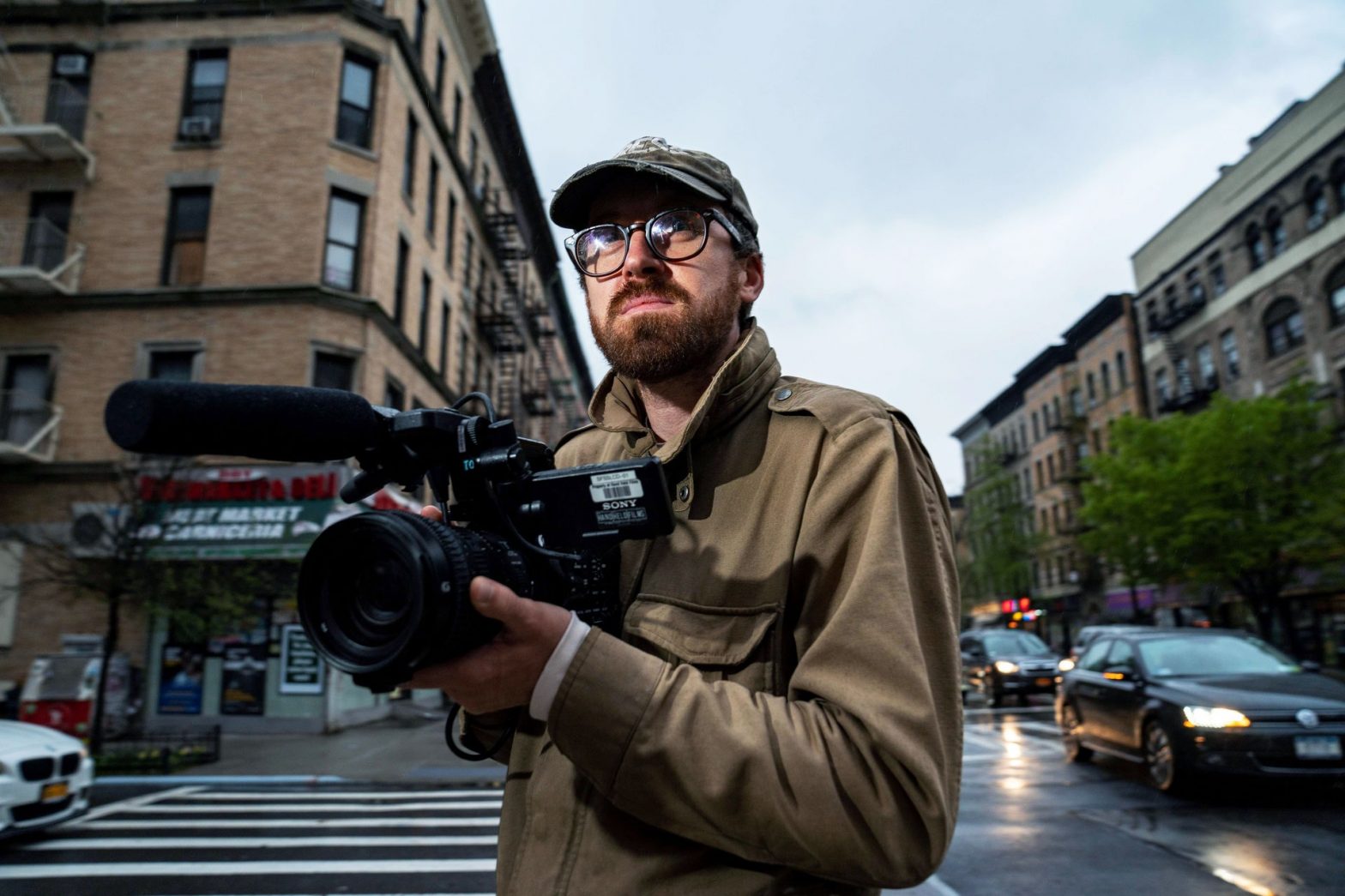How To with John Wilson captures a world you thought only you could perceive. Piles of trash, building scaffolding, curbside furniture, dismembered mannequins.
A Queens-based documentarian, John Wilson is the narrator, writer, and footage collector of this docuseries. Though we only see him in profile, Wilson shows enough of himself on camera to establish the premise of his show: he walks around New York City, a camera atop his shoulder, to capture and comment on the uncinematic ways our cityscapes expand, breathe, and ooze. His narration is persistent, sometimes apathetic, and often funny, like droll kitsch.
He fixates on the absurd, the kind of images that are cropped out of the frame in most stories about New York. Skunks running past ATMs, flipped cars, bored men on benches. These strange ruminations on objects, places, and social forms are not new to Wilson. He began filming episodes such as “How to Live with Regret” and “How to Keep Smoking” on his Vimeo channel in 2012. His current HBO version, produced by “Nathan for You” comedian Nathan Fielder, remains fascinated with the underbelly of a city Wilson is afraid to forget.
“New York City is the best character — it’s constantly renewing itself, constantly regenerating itself, losing itself,” Wilson told the New York Times last October. “It makes me want to film as much of it as I can before it disappears.”
Don’t think, though, that Wilson writes a love letter to New York City’s most profane, or does a pretentious turn in which dead rodents and deflated parade floats become beautiful. Instead, he makes the ugliness the star, not only of New York, but anywhere his wandering can take him. In the first episode, “How To Talk to Strangers,” Wilson begins by filming people on the streets of New York and follows his stream of inquisitorial consciousness to MTV’s Spring Break in Cancun,where he interviews an aspiring rapper named Chris. Here, Wilson films the crashing blue waves but also trains his camera on Chris’s hand mid-interview while his de facto “subject” buries an empty energy drink can in the sand. WIRED Magazine called How To 2020’s best nature documentary.
Others say How To is an advice series from an “anxious New Yorker.” Each of the six episodes, after all, is an instruction: “How To Split The Check,” “How To Make The Perfect Risotto.” But Wilson isn’t the typical teacher. Instead, he wanders throughout New York City to film misspelled lettering or the sole person in a crowd of one hundred who’s wearing a SpiderMan costume. Wilson is rarely concerned with the why.
Whatever it is, How To is excellent television for people who have been brought up on the internet. As I watched, I found myself a happy passenger on Wilson’s ship, somehow agreeing with how he directs me to pay attention to canned corned beef one moment and a dog pooping on a city street the next. If you chronicled all the places Wilson takes you, though, the scenes would seem disconnected—a smelly fever dream both surreal and naturalistic that never really makes a point. And yet, I never felt unmoored. It’s somehow natural that Wilson would begin with the history of New York City building scaffolding and end up next to a lone fisherman on the muddy banks of New Orleans. Each episode may look like someone else’s dream, but they feel like the internet rabbit holes most of us know well.
Take the episode “How To Improve Your Memory,” for example, which begins with Wilson capturing video of people taking photographs of themselves on the streets of New York. Wilson’s austere lens neutralizes his subjects’ saccharine faces primed for social media posts, showcasing the absurdity of their mundane. His narration, as always, is steeped in its trademark condescension and disbelief, as if to say, “this is how people remember now.” Minutes later, he’s discussing time travel, filming a man asleep on a bench, and composing his grocery list from prompts he finds on the street (banana peels, a fallen tree that looks like broccoli). Later, he’s in an office building talking to a man he met in the grocery store about the Mandela Effect.
Under any other direction, or made in any other time, How To would be bad B-roll film, uninspired avant-garde, or just unflattering footage of people doing weird things. Through his lens, however, Wilson dignifies whatever catches his attention and works within the preestablished framework of how we consume information now. I never questioned Wilson’s jump from abandoned salad to a bloodstained subway and barely blinked when an episode that spent much time on anti-circumcision concluded with Wilson commissioning a replica of his new favorite chair and putting it in a storage facility in Canarsie. If you’ve ever been to a Wikipedia page on ducks and found yourself researching Queen Elizabeth I, How To with John Wilson is familiar in the way it loses itself in inquiry without traversing much ground. Oftentimes, the episodes conclude with Wilson either at home or close to it.
The six episodes are a stunning testament to the way modernity is quick and expansive. As Wilson points out, we live in cities where our favorite dive bars turn into TD Banks overnight and spend our lives on information systems that can find donut shops in Tasmania as quickly as YouTube videos on how to be brave. What Wilson creates, then, feels fitting for the time, but it also makes history out of our strange and anxious present.
At one point, Wilson shows us ten years’ worth of his daily logs inside his apartment in Queens. The logs, like How To, are tiny and enormous, spanning multiple mustard notebooks with their pages divided into hundreds of boxes to represent each day. Here, we start to know Wilson as more than just the kind purveyor of the eccentric. He’s someone who wants to remember everything exactly as it was.

